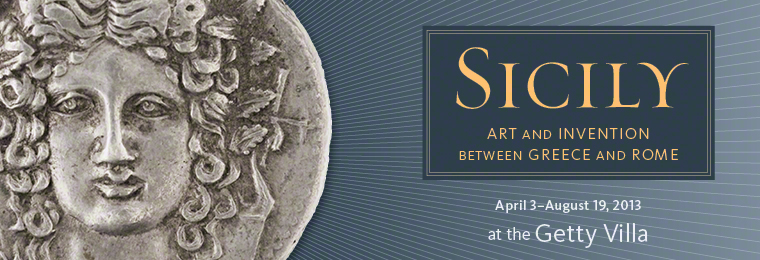The exhibit opens today at the Getty Villa, along with the book being available for purchase.
Sicily: Art and Invention between Greece and Rome (Edited by Claire L. Lyons, Michael Bennett, and Clemente Marconi) is the only English-language book that focuses on the watershed period between the victory over the Carthaginians at the Battle of Himera in 480 B.C. and the Roman conquest of Syracuse in 212 B.C., a time of great social and political ferment. Intended as a sourcebook for Classical and Hellenistic Sicily, this anthology features current research by more than forty international scholars. The essays investigate Sicily not simply as a destination for adventurers and settlers, but as a catalyst that shaped Greek culture at its peak and transmitted Hellenism to Rome. You may purchase the book at the Getty Villa store or online at: Getty Shop
 |
“Statue of a Youth (The Mozia Charioteer)” is regarded as a masterpiece of early classical marble statuary. (J. Paul Getty Trust / March 1, 2013) |
According to one of the editors, Claire Lyon; "The show consists of more than 150 objects, about a third of which are on loan from Sicilian museums.It is the first major show to develop from the partnership resulting from the 2010 agreement calling for joint projects in conservation, earthquake protection of artworks, exhibitions, scholarly research and conferences.This is also the first major exhibition in this country to focus exclusively on Sicily."
Two years ago, the Getty Villa ended a lengthy dispute with Italian cultural authorities by returning a towering limestone and marble statue of a Greek goddess to Sicily. The sculpture is now the pride of the relatively modest Museo Archeologico in Aidone — and by far its biggest attraction.
 |
| A Statue of a Goddess at the Getty Villa |
 |
| A Statue of a Goddess returned Home to Sicily |

No comments:
Post a Comment